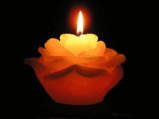Buddhist
believes that ordination is an act of great merit and that the merit can be
transferred to the presents.
Once the decision to be ordained is made, the man
must seek admission from the temple where he want to join as a monk and a spiritual teacher who will supervise
him during his monk hood. While family is busy preparing monastic accessories
necessary for the ordination ceremony, the man visit the temple regularly to
familiarize himself with monastic life, learn to chant the holy stanzas and
rehearse the ordination ceremony.
Ordination
is a joyful occasion for family members and friends of ordination candidate or
Naga. Religious ceremonies are usually organized for a day or two prior to
ordination day. On the ordination eve, a touching and heartening ceremony is
performed by a highly respected storyteller. The life story is narrated in
verses in melodious and moaning tone reflecting the difficulties of bearing and
raising a child until he becomes full-grown and about to enter the monk hood.
The narration is meant to sadden the Naga when reflecting how much burden he
had caused his parents. The ceremony is to give the candidate the spiritual encouragement
to change his life for a better one and to exemplify what great merits it brings
to become ordinate. One the ordination day the Naga wears white robe and his
parent perform a bathing ceremony by shaving his head and eyebrows and pouring
water over his head. After that the Naga changes into ceremonial attire
consisting of a white long sleeved shirt and an ankle length, front pleated
white sarong. He is then accompanied to the temple by his family and friends,
usually in a colorful procession. It is common for the Naga to ride on
someone’s shoulders, on horse back, or even on elephant back. When they arrive
at the temple, they make a triple ambulation around the Ubosat before entering.
The ordination takes place inside the Ubosat in a solemn ceremony amidst a
congregation of monks. During the ceremony, the Naga is asked a series of question.
Do
you have leprosy? NO
Do you have smallpox? NO
Do you have ringworm? NO
Do
you have tuberculosis? NO
Do you have epileptic? NO
Are you human? YES
Are
you male? YES
Are you free man? YES
Are you released from government service?
YES
Do your parent permit you to become a monk? YES
Are you at least 20 years
old? YES
Do you have your robes and aims bowl? YES
What is your ordination
name?
What is your spiritual teacher name?
If
the Naga answers these questions correctly, he is then ordained. The newly
ordained monk spends time studying the Lord Buddha’s teachings and meditating
under the supervision of spiritual teacher or preceptor. He has to observe the
227 monastic rules until he decides to leave the monk hood which is
traditionally after the rains retreat.














0 comments:
Post a Comment